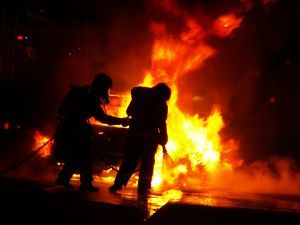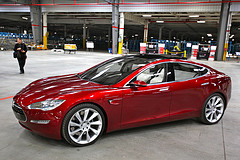Theoretically, consumers face the potential for buying a defective product every time they go shopping, with an array of consumer products from the most simple or small to the most complex or large quite possibly putting a person at risk for injury. Among consumer products that fit the latter description, automobiles are perhaps one of the most iconic examples, and San Francisco products liability attorney Gregory J. Brod has been closely following developments in the auto industry that could impact consumer safety.
https://www.youtube.com/watch?v=q0kjI08n4fg
The production of electric and hybrid cars has been one of the more exciting developments in the automobile industry, but the technology remains very much a work in progress, with studies on safety issues an ongoing process. An electric or hybrid car’s battery is usually the focus of any safety investigation, with any such safety probe in the past as the result of a fire that has erupted for some reason in the car’s battery. For example, last year the Chevrolet Volt plug-in hybrid was the subject of stepped-up scrutiny after a number of fires broke out after test crashes of the vehicle. General Motors, the vehicle’s manufacturer, stated that the fires were the result of a coolant leak and short circuit that was triggered when the car’s battery pack was punctured during the test crashes.
Company Stock Takes Hit After Model S Reportedly Strikes Object, Bursts into Flames
On Wednesday, another incident involving an electric car model, this time one manufactured by Tesla Motors, was in the news due to a fire. As reported by USA Today, investors in the Palo Alto-based company took a 6.24 percent hit in the price of their shares after a video surfaced on YouTube showing a Tesla Model S catching on fire on Tuesday. The sedan was traveling on state Route 167 near Seattle when, according to the driver, it struck some debris on the highway and burst into flames. Tesla Motors issued a statement Wednesday saying that the fire was caused by “substantial damage” to the car when the driver hit a large metal object on the road and that the flames were contained to the front of the vehicle.
Other than the shareholders who were singed from the incident – and obviously rattled by concerns over the vehicle battery’s safety – no one was hurt in the fire that damaged the ill-fated Tesla Model S on Tuesday. While car fires are not particularly unusual, those involving electric or hybrid vehicles have been closely monitored by safety officials due to concerns that lithium-ion battery systems might be more susceptible to fires.
Government Urges Public Awareness on Safety Measures for Electric Vehicles
In the wake of the recent controversy surrounding the Chevrolet Volt, the National Highway Traffic Safety Administration conducted a safety defect investigation and issued a statement on Jan. 20, 2012, saying that it didn’t believe that Chevy Volts or other electric vehicles pose a greater risk of fire than gasoline-powered vehicles. However, the NHTSA also stated that electric vehicles have specific attributes that should be made clear to several key constituencies, including consumers, and that the agency has developed interim guidance to increase awareness and point out appropriate safety measures for those concerned.
Continue Reading ›

 San Francisco Injury Lawyer Blog
San Francisco Injury Lawyer Blog




 Honda recently announced that it is recalling 2007 and 2008 Honda Odyssey minivans. The recall, which involves 344,187 vehicles built between August 8, 2006 and September 8, 2008, is discussed in an
Honda recently announced that it is recalling 2007 and 2008 Honda Odyssey minivans. The recall, which involves 344,187 vehicles built between August 8, 2006 and September 8, 2008, is discussed in an  Burn injuries are one of the biggest threats to a safe Halloween celebration. Despite a federal law requiring costumes meet flame-resistance standards, flammable costumes remain a real threat.
Burn injuries are one of the biggest threats to a safe Halloween celebration. Despite a federal law requiring costumes meet flame-resistance standards, flammable costumes remain a real threat. 
 officials have linked a vehicle fire near Seattle to a problem in the battery pack of a Tesla electric car, as discussed in an Associated Press
officials have linked a vehicle fire near Seattle to a problem in the battery pack of a Tesla electric car, as discussed in an Associated Press 